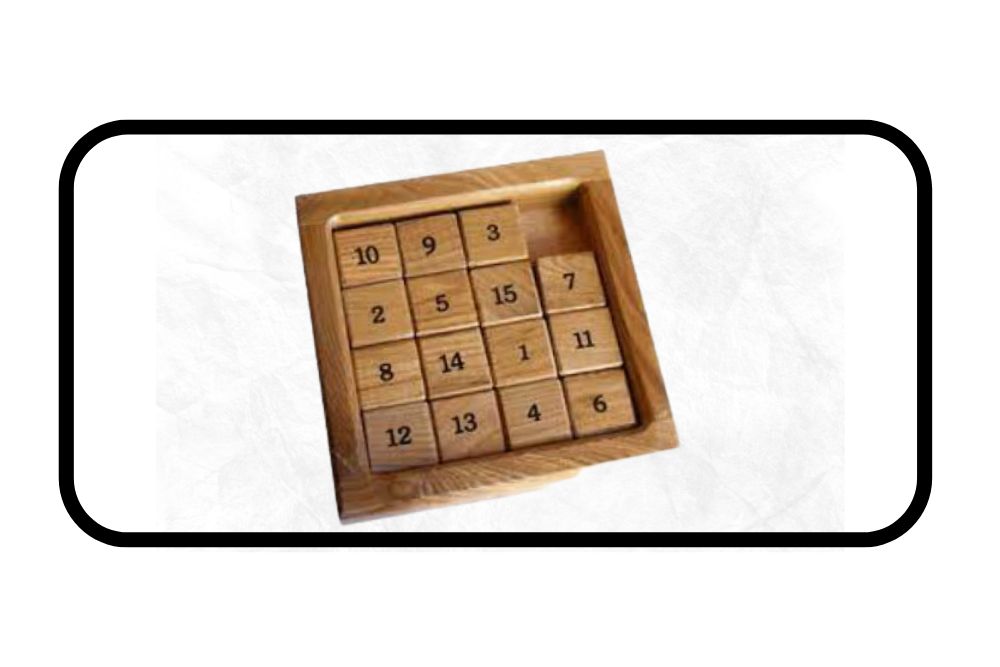The Hanayama Enigma Puzzle is a perplexing and intriguing brain teaser that has captured the attention of puzzle enthusiasts worldwide.
Known for its intricate design and unique mechanism, the Enigma puzzle offers a challenging and rewarding experience for those who dare to tackle it.
One might think that solving a Hanayama Enigma Puzzle is an impossible feat; however, with patience, perseverance, and a strategic approach, even the most inexperienced puzzler can conquer this enigmatic creation.
This article will provide a step-by-step guide on how to dismantle and reassemble the puzzle, enabling anyone to experience the satisfaction of solving a Hanayama Enigma Puzzle themselves.
Before diving into the solution, it is crucial to understand the puzzle’s construction and appreciate its ingenuity.
The Hanayama Enigma Puzzle consists of three interlocking pieces, each expertly designed to create a complex locking mechanism.
The goal is not only to take the puzzle apart but also to put it back together – thus mastering both aspects of the challenge!
Understanding the Hanayama Enigma Puzzle
The Hanayama Enigma Puzzle is a fascinating and challenging brain teaser made by Hanayama, a Japanese company known for producing a wide range of high-quality, intricate puzzles.

Components and Design
The Enigma Puzzle is crafted from cast metal and consists of three interlocking pieces that come together to create a visually appealing and compact design. The tactile feel of the puzzle, combined with its attractive appearance, adds to the overall enjoyment of solving it. Each piece is uniquely shaped, with curves and notches that interlock in a precise, specific manner.
Level of Difficulty
On Hanayama’s scale of difficulty, the Enigma Puzzle is rated as a level 6 out of 6, making it one of the most challenging puzzles in their lineup.
Even for experienced puzzle solvers, figuring out the correct sequence of moves to disassemble and reassemble the three pieces can be a time-consuming and thought-provoking process.
Goal
The objective of the Hanayama Enigma Puzzle is to take apart the three interlocking components and reassemble them in their original configuration.
While this might seem like a simple task, the intricate and specific design of the components makes it a far more difficult challenge than it initially appears.
By applying logic, spatial reasoning, and a systematic approach, individuals can work through the puzzle and eventually solve it.
However, the Enigma Puzzle is designed to be a lengthy and satisfying test of one’s mental abilities, demanding patience and persistence from the solver.
Preparing to Solve the Puzzle
Before attempting to solve the Hanayama Enigma puzzle, it is important to properly prepare in order to ensure the most pleasant and efficient experience.
Gathering Necessary Tools
While the Enigma puzzle may not require specialized tools for solving, having a few common items on hand can be beneficial. Items that can be helpful include:
- A soft cloth or towel to protect the puzzle and the surface it is being worked on
- A pair of tweezers or a thin, flat tool for manipulating small pieces
- A notepad and pen for recording the steps taken in order to help with reassembling the puzzle or tracking progress
Creating a Comfortable Workspace
Establishing a comfortable workspace will greatly contribute to the overall puzzle-solving experience. A few factors to consider when setting up the workspace are:
Workspace Factor | Suggested Solution |
|---|---|
| Surface Quality | Choose a flat, clean, and uncluttered surface, such as a desk or table. |
| Lighting | Ensure the area is well-lit to easily observe and manipulate the puzzle pieces. |
| Seating | Choose a comfortable chair with proper back support to prevent discomfort during extended sessions. |
Once the necessary tools have been gathered and a comfortable workspace has been created, the puzzle solver is ready to begin tackling the Hanayama Enigma puzzle.
Solving Techniques
Familiarizing Yourself with the Pieces
To solve the Hanayama Enigma Puzzle, it’s essential for the solver to become familiar with the intricacies of each individual piece. By examining the pieces closely, they can identify the unique characteristics that will aid them in the unlocking process.
It is helpful to learn how the pieces are interconnected and recognize any patterns that may exist. This can be achieved by carefully observing how the pieces move, rotate, or pivot when manipulated.
Developing a Methodical Approach
A systematic approach is vital when attempting to solve a Hanayama Enigma Puzzle.
Building a step-by-step plan and keeping track of successful actions can significantly increase the chances of finding the correct sequence of moves.
Utilizing tools such as notebooks or photographs to document the actions can help the solver remember particular steps and avoid repeating unsuccessful moves.
Developing a logical and organized strategy also benefits the solver by enabling them to identify potential shortcuts and alternate solutions.
Using Trial and Error
Although having a solid plan is crucial, sometimes a bit of trial and error can lead to discoveries that were not foreseen in the initial approach.
Encountering challenges and experimenting with various moves can provide valuable insights on how the pieces fit and interact with each other.
One example of using trial and error could be twisting or turning the pieces in unanticipated directions to see if a new movement pattern emerges.
Acknowledging that some attempts may not lead to immediate results, but instead provide additional knowledge, is a valuable part of the puzzle-solving journey.
Advanced Tips and Tricks
Recognizing Patterns
When solving a Hanayama Enigma Puzzle, one of the crucial aspects is identifying patterns in the puzzle’s structure.
Experienced solvers often look for recurring shapes or sequences to help them anticipate the moves required to take the puzzle apart or put it back together.
Some common patterns include:
- Interlocking parts that slide or rotate
- Pieces that fit together in a specific order
- Similar shapes or notches that indicate a connection point
Recognizing these patterns will speed up the solving process and make it less frustrating for the solver.
Incorporating Previous Solves
As a solver gains experience with Hanayama Enigma Puzzles, they should actively incorporate their knowledge from previous solves. By doing so, they can draw upon past experiences to identify similar mechanisms or techniques that apply to the current puzzle.
To effectively integrate previous solves, solvers can:
- Take notes or document their thought process while solving earlier puzzles
- Compare the current puzzle’s structure to those they have solved before
- Practice and refine their skills on a variety of different puzzle types
By incorporating previous solves, solvers will both improve their efficiency and develop a more comprehensive understanding of Hanayama Enigma Puzzles overall.
Staying Motivated
Solving a Hanayama Enigma Puzzle can be both challenging and rewarding. In order to stay motivated throughout the process, it is important to approach the task with the right mindset and resources.
Setting Realistic Goals
It’s important for a solver to set realistic goals when working on a Hanayama Enigma Puzzle. They should consider breaking the puzzle-solving process down into smaller, more manageable tasks. This may involve focusing on mastering a specific technique or making progress towards completing a certain stage of the puzzle.
By setting achievable goals, solvers can experience a sense of accomplishment and maintain their motivation. It can be helpful to remember that even small victories are still progress.
Finding a Puzzle Solving Community
Joining a puzzle-solving community can be a great source of motivation and support for those tackling a Hanayama Enigma Puzzle.
In these communities, solvers can ask for help, share tips and tricks, and discuss their struggles and successes with others who share the same interest.
Online forums, social media groups, and local puzzle-solving clubs are all potential sources for connecting with fellow puzzle enthusiasts.
These connections can provide a positive environment that helps solvers maintain their motivation and enjoy the puzzle-solving journey.
Final Thoughts
Solving a Hanayama Enigma puzzle can be a challenging yet rewarding experience.
These mind-bending puzzles require patience, critical thinking, and perseverance.
Remember to approach the puzzle with a clear mind and break it down into smaller, more manageable steps.
It’s essential to analyze each part of the puzzle and identify any possible moves or connections that can help you make progress.
While it may be tempting to rush through the solution, taking the time to appreciate the intricacies of the Enigma’s design makes the experience all the more enjoyable.
As with any puzzle, the satisfaction comes from overcoming the challenges it presents.
Lastly, don’t be afraid to ask for help or utilize online resources if needed. The puzzle-solving community can offer valuable insights and support. With time, practice, and determination, anyone can master the Hanayama Enigma Puzzle.




